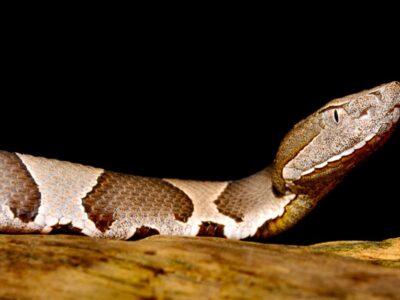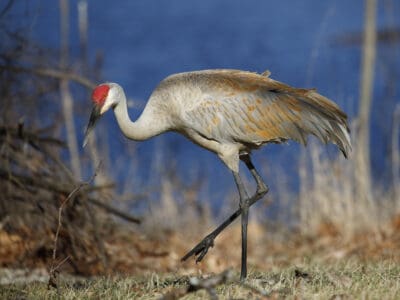Kentucky located in the United States has a diverse landscape that includes mountains, lakes, rivers, wetlands, forests, and even caves. So, it’s not surprising that the state is home to a variety of mammals, insects, birds, reptiles, and amphibians.
Some of the most well-known wild animals in Kentucky include the little brown bat, black bear, sandhill crane, Kentucky warbler, copperhead snake, eastern box turtle, and largemouth bass.
The Official Animal of Kentucky
Kentucky has a few different official state animals that help to represent the wide variety of wildlife there. Check out some of the official animals of Kentucky.
Official Mammal of Kentucky: Thoroughbred Horse
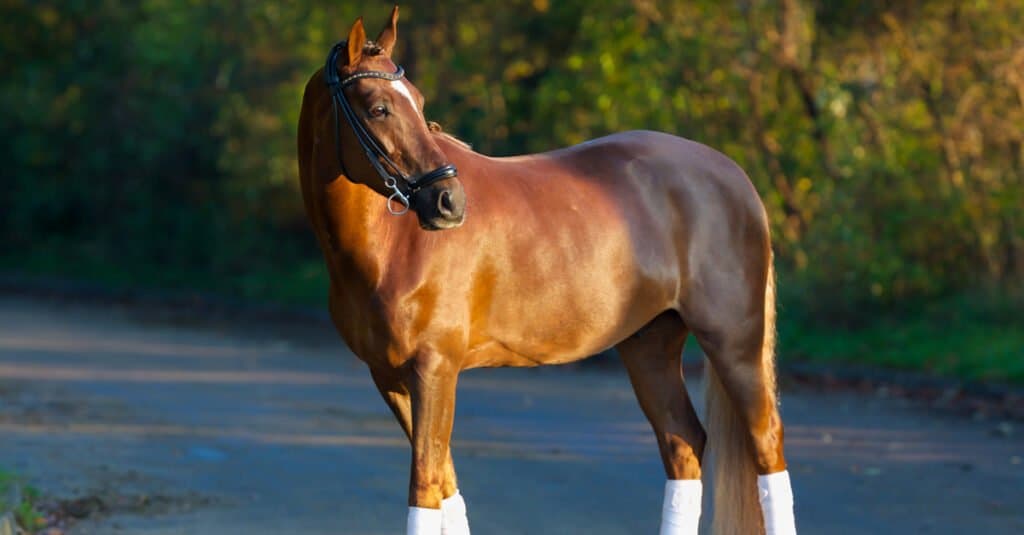
The thoroughbred horse is Kentucky’s state animal
©BIGANDT.COM/Shutterstock.com
Though these are not wild animals, they are considered treasures in the state of Kentucky. The state is home to many thoroughbred farms and breeding programs. This horse became the official mammal of the state in 1996. Since 1875, this midwestern state has hosted the Kentucky Derby horse race on the first Saturday in May every year.
The Kentucky Derby attracts racing fans and horse owners from across the globe. One of the most famous horses to win the Kentucky Derby was Secretariat. Secretariat won the Derby in 1973 when the 99th running of the race took place.
Official State Bird of Kentucky: Northern Cardinal
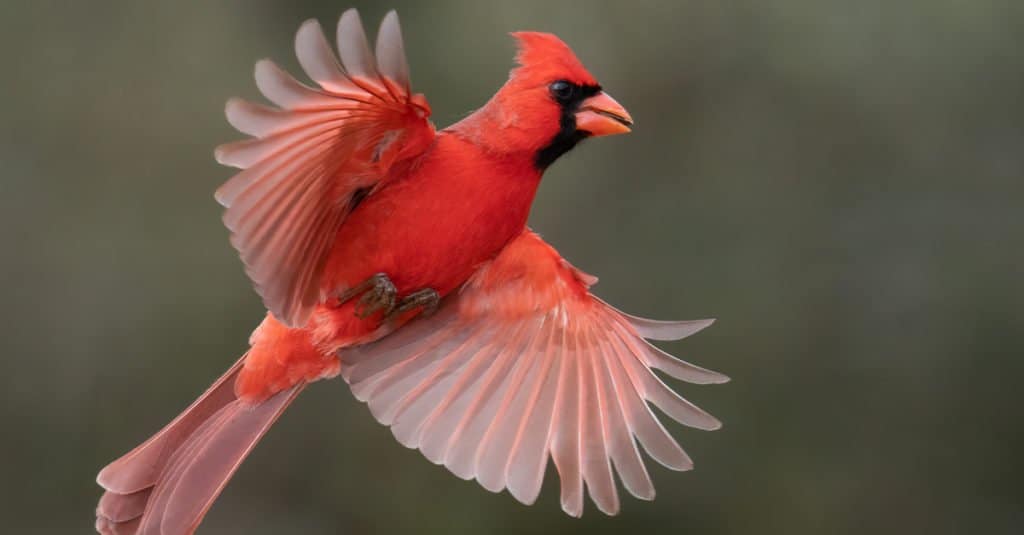
It is the male Northern Cardinal which is known for its beautiful scarlet plumage. The female’s on the other hand happens to be a drab brown with a few touches of red
©Rob Palmer Photography/Shutterstock.com
Back in 1926, the northern cardinal became the state bird of Kentucky. They are a familiar sight at backyard bird feeders and birdbaths all over the state. The bright red feathers of a male northern cardinal along with the distinctive mask of black feathers on its face make this bird hard to overlook! The female cardinal bears a resemblance to the male with the tuft of feathers on its head.
However, the female is duller in color with brownish-gray feathers and a few splotches of red. This bird has a distinctive song that sounds similar to the words, ‘cheer, cheer, cheer’ or ‘birdie, birdie, birdie.’ As a note, the popularity of this memorable bird has earned it the honor of being the state bird of 7 states in the U.S.!
Official Fish of Kentucky: Kentucky Spotted Bass
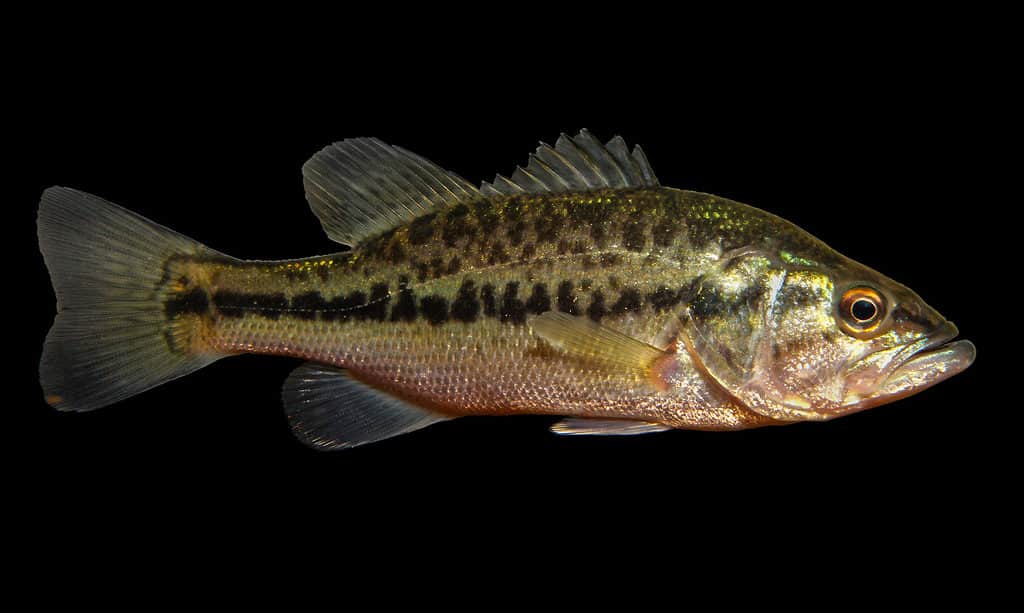
The spotted bass has a lifespan of about six years
©Sean McVey/Shutterstock.com
In 1956, Kentucky spotted bass became the official fish of this state. These fish are a common sight in clear streams, lakes, and reservoirs throughout Kentucky. They seem to have a preference for water which their smallmouth counterparts would find too warm for comfort. They have a lifespan of about six years and can mate with smallmouth bass as evidenced by the hybrids which have been spotted.
A female can lay up to 47,000 eggs at one time. The male swims around the eggs to keep watch over them until they hatch. With all of those eggs hatching in streams and rivers, it’s not hard to believe that the conservation status of this fish is Least Concern. The spotted bass is far from the only variety of this highly popular fish to be found in the Bluegrass State. Additional varieties include largemouth, smallmouth, striped, and white.
Where to Find the Top Wild Animals in Kentucky
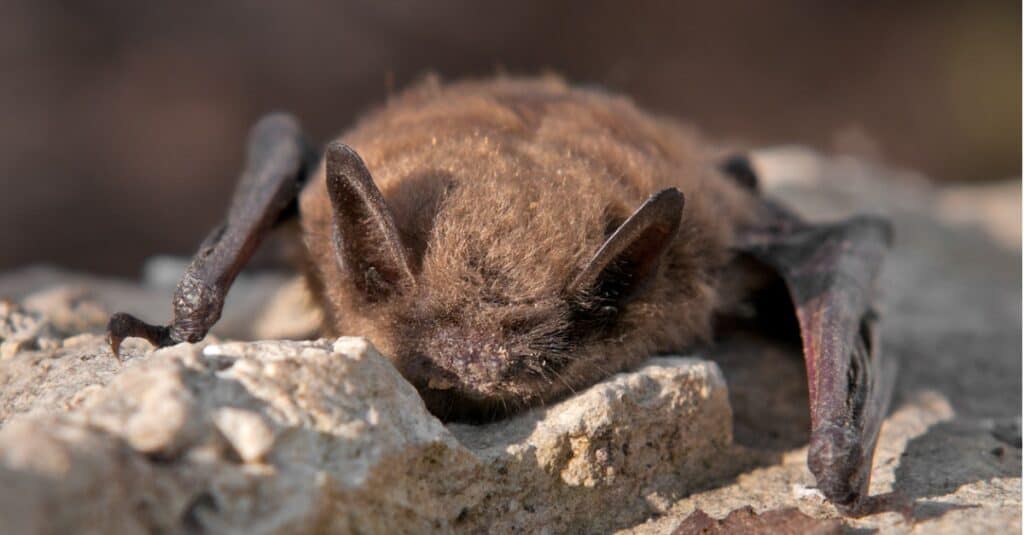
Little brown bats can be admired in Mammoth Caves
©iStock.com/gkuchera
Visitors to Kentucky have the opportunity to see lots of different types of wildlife. Naturally, the types of wild animals a person sees depend on where they travel in the state.
People who visit Mammoth Caves in Kentucky can see unique wildlife such as little brown bats, cave salamanders, and Kentucky cave shrimp. The strange eyeless fish is another cave-dwelling animal in Kentucky. Some visitors may be lucky enough to catch a glimpse of the endangered Indiana brown bat.
The forests of Kentucky are home to white-tail deer, rabbits, American toads, coyotes, opossums, squirrels, skunks, and foxes. Rodents including mice, pine voles, and eastern woodrats are other forest dwellers.
Rivers in Kentucky are home to flathead catfish, spotted bass, white bass, walleye, and bluegills among others. The variety of fish in the rivers and lakes of Kentucky makes it a popular state for amateur and seasoned fishermen alike.
Kentucky’s wetlands serve as the habitat for common snapping turtles, alligator gar, swamp darters, masked shrews, Kirtland’s snake, and the heron.
Mountains in Kentucky such as the Appalachian Mountains are home to elk, black bears, whitetail deer, beaver, weasels, and chipmunks.
Recommended locations to see wild animals in Kentucky:
- Mammoth Cave National Park
- Daniel Boone National Forest
- Cumberland Falls State Park
- Nolin Lake State Park
- Carter Caves State Resort Park
- Audubon Wetland Trails
Locations of Zoos in Kentucky
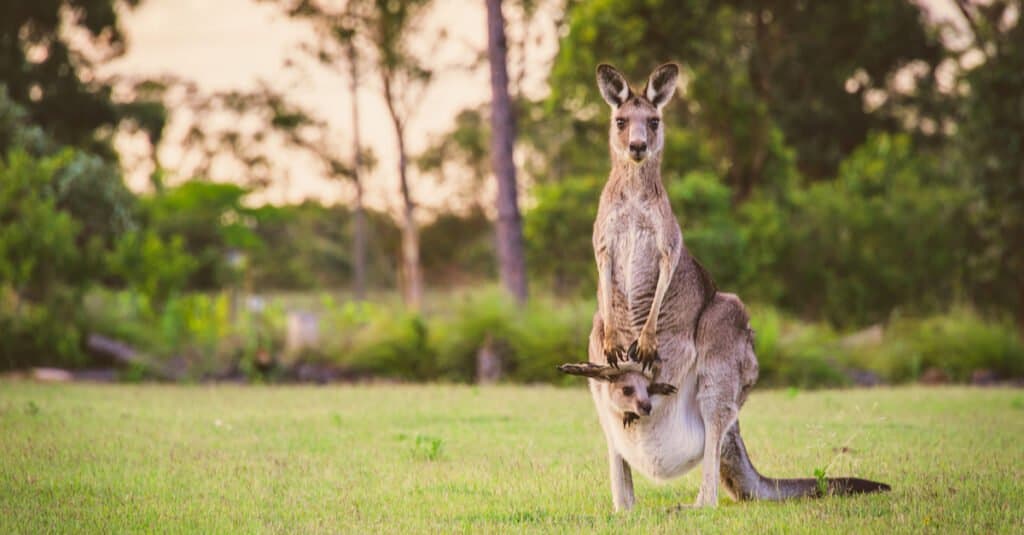
Kentucky’s main zoos offer a wealth of exciting experiences and the opportunity to see animals from all around the globe
©IntoTheWorld/Shutterstock.com
A zoo is another great place to observe the native wildlife of Kentucky along with animals from elsewhere in the world.
Some of the zoos in Kentucky include:
- Louisville Zoo: Home to over 1,200 animals, this zoo also provides key exhibits named for the regions each group of animals has been drawn from, or named for the category of animals itself. They include Australia, Islands, Herpaquarium, and South America.
- Kentucky Down Under Adventure Zoo: Originally starting out as Mammoth Onyx Caves, this institution saw more and more species of wildlife added to its exhibition roster until it became the much-loved park it is today. Visitors can enjoy gem mining, a petting zoo, education programs, and a glimpse of the Australian Outback.
- Kentucky Reptile Zoo: This park is home to over 75 species of alligators, lizards, snakes, and turtles, making it every reptile enthusiast’s dream. Several residents are venomous since the institution provides venom for research purposes.
- Newport Aquarium: From eels, to sharks, to turtles, to toads, there’s something for everyone who happens to be a fan of marine wildlife at this park.
The Most Dangerous Animals in Kentucky Today
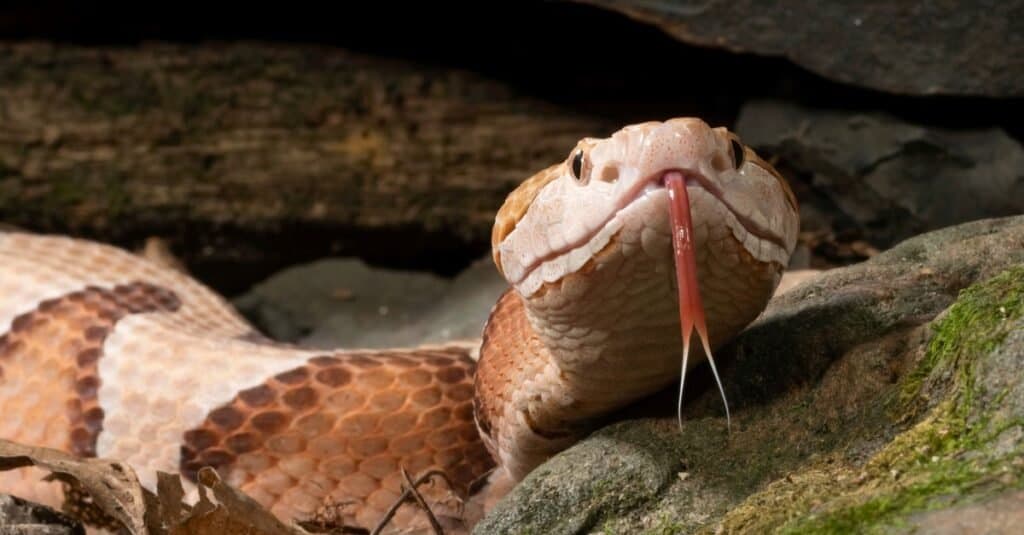
In spite of their venom, copperheads are not aggressive and prefer to blend in with their environment when they feel threatened
©Joe McDonald/Shutterstock.com
As with most states, Kentucky has some wild animals and native wildlife that are considered dangerous. Discover a few of the most dangerous animals in Kentucky.
Snakes in Kentucky
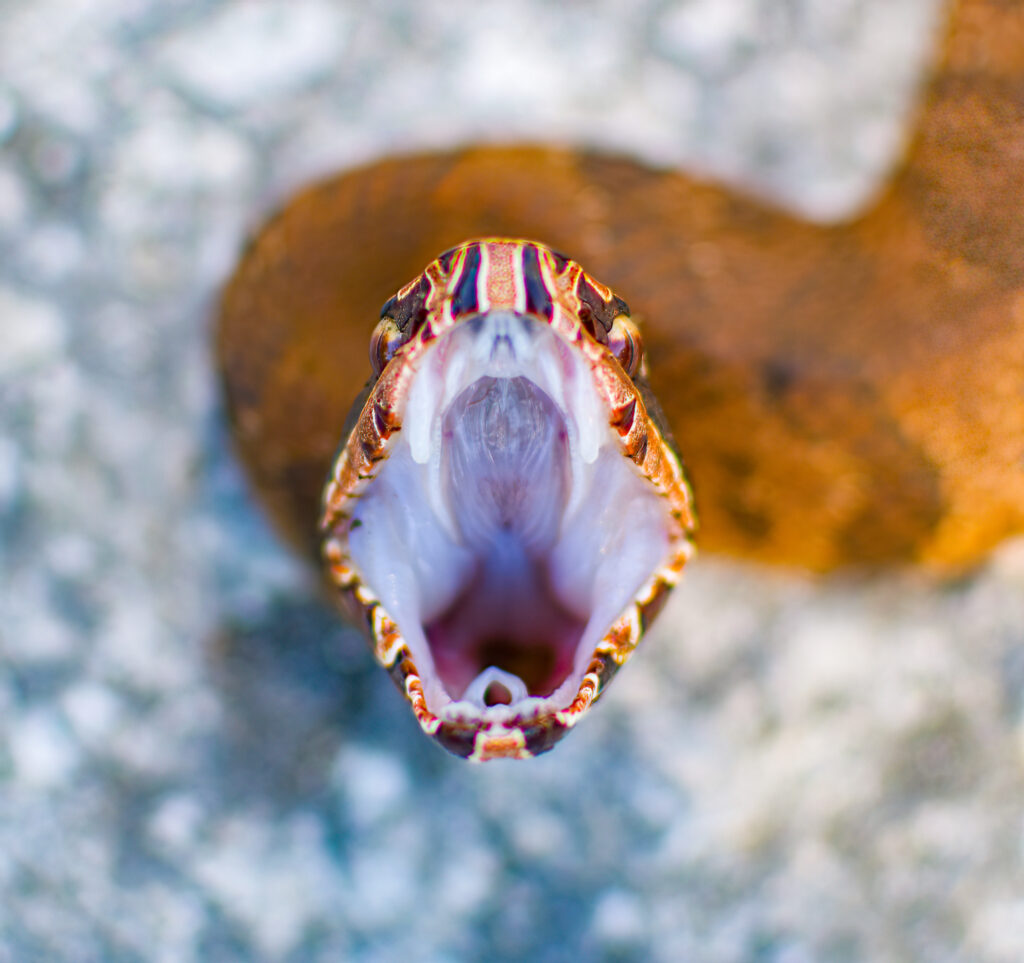
Cottonmouths unlike copperheads are aggressive and will respond to any encroachment of their territory; their venom is pretty potent and dangerous to humans
©iStock.com/Chase D’animulls
There are more than 30 types of snakes found in Kentucky, of which four are venomous.
The copperhead snake is one of the most dangerous animals in Kentucky. It is one of several venomous snakes living in the state. Copperhead snakes get their name from the copper-colored pattern of their scales. As an adult, this reptile can reach a length of up to four feet. Keep in mind that they are not known to be aggressive and usually remain still in order to blend in with their forest habitat when they detect a threat.
A common reaction of this snake is to vibrate its tail to warn predators or other threats to move away. It uses its venom to kill rodents and other prey. Fortunately, its venom is not strong enough to kill a human. But this doesn’t mean its bite is not painful! Anyone who is bitten by a copperhead snake should seek medical treatment as soon as possible.
The cottonmouth is another snake that makes the list of Kentucky’s most dangerous wild animals. This snake gets its name from the white interior of its mouth. It has a strange habit of allowing its mouth to gape open when threatened by predators. This bright white (along with its fangs) are meant to scare away the threat. Unlike the copperhead, the cottonmouth snake is aggressive to wildlife and people who walk into its territory. Of course, most people don’t know when they are walking into this snake’s territory!
These snakes grow to a length of three to four feet. The venom of a cottonmouth is very powerful and is potentially deadly to a human. Fortunately, cottonmouth snake bites aren’t common and account for less than one percent of all the snake bites recorded in the United States each year. Keep in mind that medical attention is needed right away after being bitten by a cottonmouth snake.
Bears in Kentucky
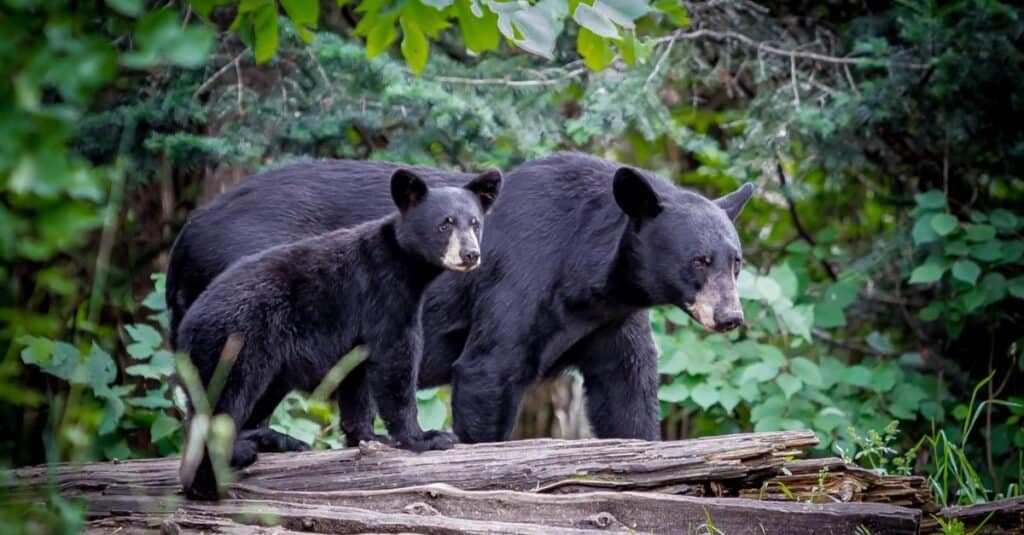
Black bears can be particularly aggressive if they happen to be caring for cubs
©jo Crebbin/Shutterstock.com
Black bears are also known as some of the most dangerous animals in Kentucky today. Though it’s common for these mammals to stay away from people, they can become aggressive especially when their cubs are in the area. They are very protective animals. These are strong bears; they have sharp claws and can weigh up to 600 plus pounds. Fortunately, black bear attacks are really rare. These mammals are more likely to get into a fight with a domesticated dog they meet in the woods than attack a human.
Spiders in Kentucky
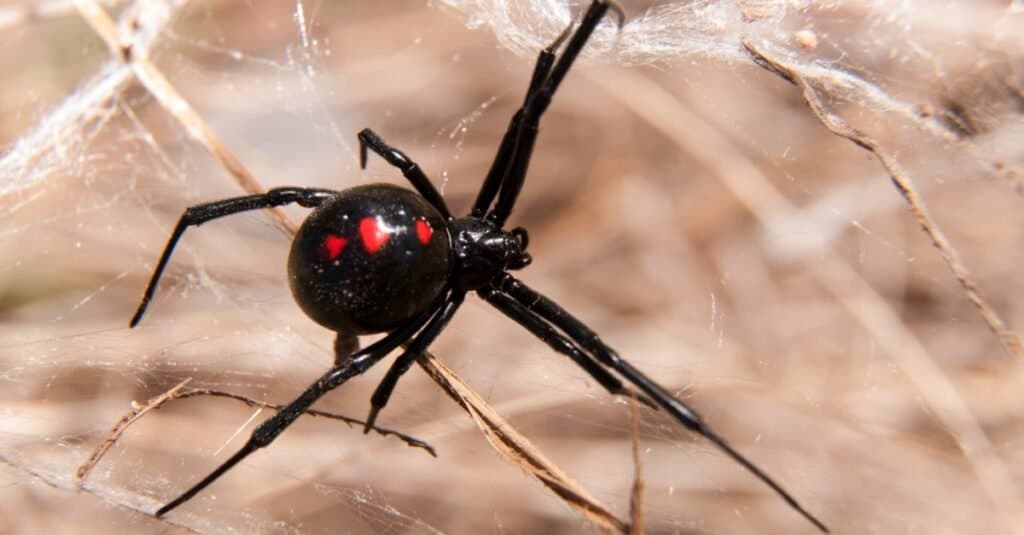
Black widow venom can cause breathing difficulties, pain, nausea, and sweating and always requires medical attention
©Sari ONeal/Shutterstock.com
Kentucky is home to many species of spiders from jumping spiders, to orb weavers, to spiders with dangerous bites that contain venom.
Black widow spiders are among some of the most dangerous wildlife in Kentucky. The female black widow spider is black with a distinctive design in red or yellow on its abdomen. It’s venomous and lives under porches and in corners of garages and sheds. They normally make their web in places where they aren’t likely to encounter people.
Though their venom is powerful enough to kill their prey of flies, grasshoppers, and beetles, human death is the rarest result. In fact, there have been no recorded deaths from a black widow’s bite since the 1980s. However, they are most likely to bite someone when they reach into a dusty corner of a garage or shed without realizing the spider and its web are there. This spider’s bite can make a person ill causing swelling, pain, difficulty breathing, nausea, sweating, and other symptoms. Medical treatment is necessary for anyone bitten by this venomous spider.
The Largest Animal in Kentucky
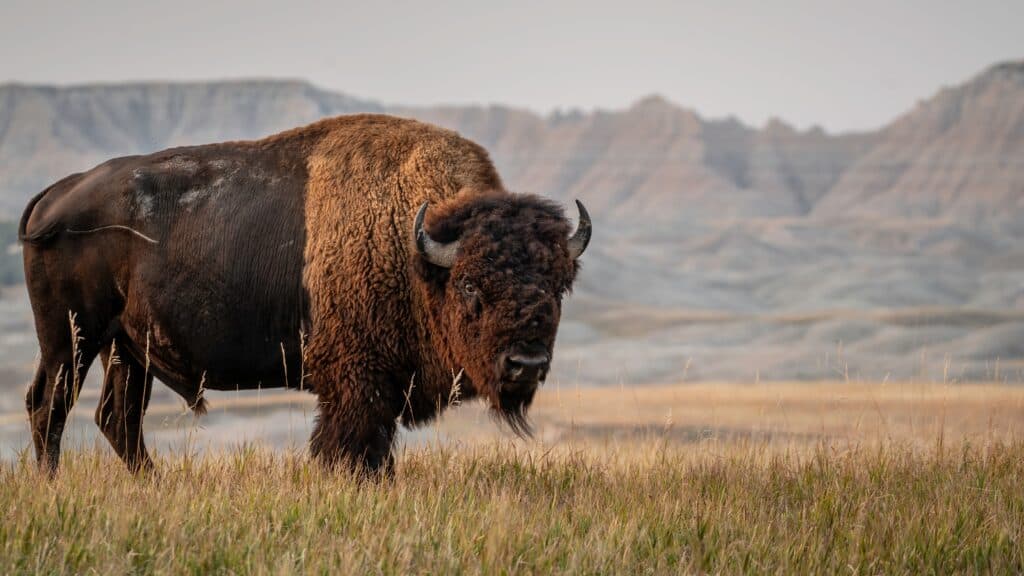
Bison once roamed North America in their numbers until they were hunted to extinction. Today, they can be admired in Kentucky in Big Bone Lick State Park
©Tim Malek/Shutterstock.com
The title of largest animal in the Bluegrass State, goes to the bison. The massive herbivore known for its large shaggy head is a case of deceiving appearances. The towering bovine is actually a gifted athlete and is not only a strong swimmer but is also capable of reaching speeds of 35 – 40 mph. Most surprising of all is its ability to defy gravity and clear 6 feet in a single leap.
Those abilities become all the more impressive given the fact that bison are capable of reaching 6 feet in height, and tipping the scales at 2,000 lbs. They once roamed the region in their numbers until they were hunted to extinction. The last native bison was seen in Kentucky in the 19th century.
Today these bovine giants can be admired at Big Bone Lick State Park where they are hailed as being the only living connection to the Ice Age.
The Rarest Animal in Kentucky
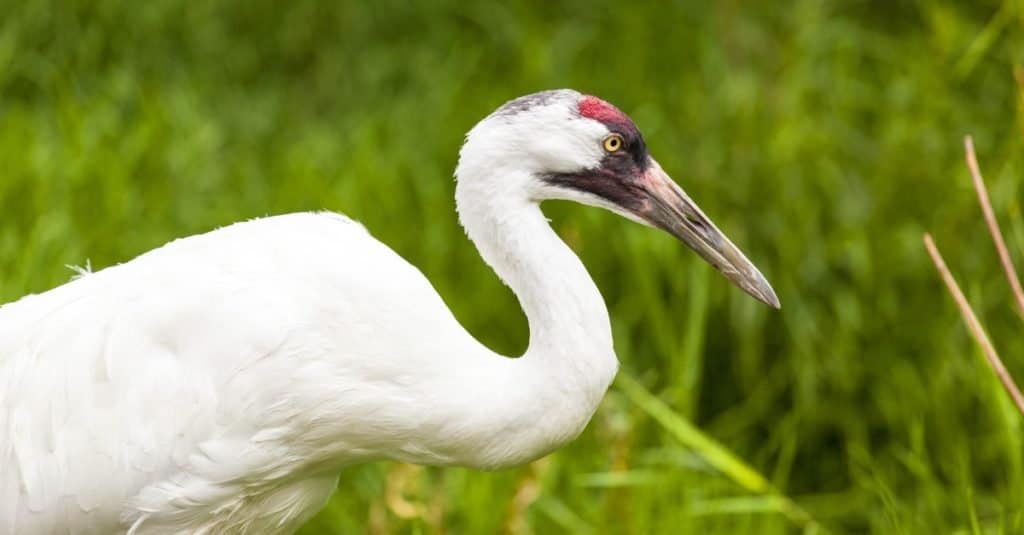
About 500 whooping cranes exist in the wild in the United States
©GTS Productions/Shutterstock.com
As far avians go, Kentucky’s rarest animal is pretty heavy. and is capable of weighing 16 lbs. It’s also pretty tall, too and has been known to reach heights of 5 feet 3 inches. Known as the whooping crane it is actually the tallest bird in the United States. It can be recognized by its white plumage, a dark slender beak, and a red cap which seems to extend from its beak.
The United State’s eastern population which is made up of about 100 birds, tends to pass through western Kentucky on journeys between Wisconsin and Florida. The national population of whooping cranes is believed to be about 500. Hunting these large, majestic avians is prohibited.
Endangered Animals in Kentucky
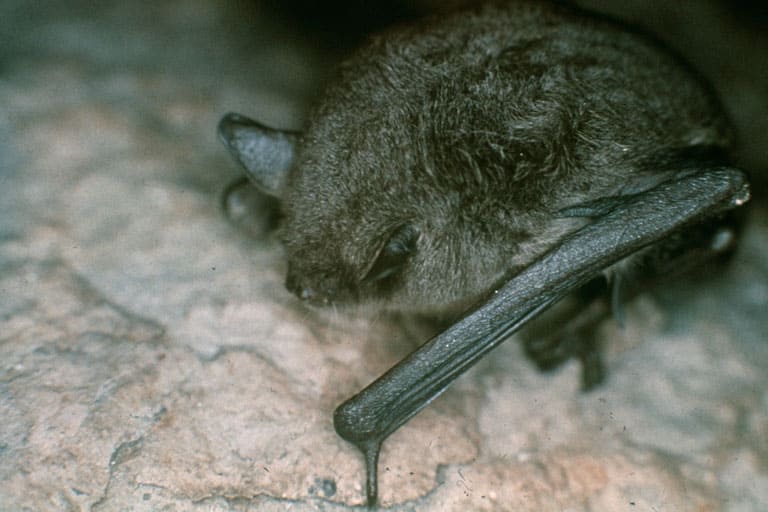
The gray bat is currently threatened as a result of habitat loss
©Jerry A. Payne, USDA Agricultural Research Service, Bugwood.org, CC BY 3.0 US, via Wikimedia Commons – License
Kentucky Endangered animals include:
- Cumberland Darter – This fish grows to be about two inches long and is a member of the perch family. It’s found in streams and in shallow pools. They are threatened by water pollution and habitat loss in Kentucky.
- Whooping Crane – This is the tallest bird in North America and has a seven-and-a-half-foot wingspan. Though this bird’s population is increasing, it is still one of the rarest sights in the Bluegrass state. There are just 50 to 249 mature individuals in existence. Loss of their wetland habitat is one reason why these birds are categorized as Endangered.
- Blackside Dace – This fish grows to a length of three inches and is found in the Cumberland River system. It has green and gold scales with bright yellow fins. Habitat loss and water pollution have contributed to the decreasing population of this fish.
- Rusty Patched Bumble Bee – These bees get their name from the rusty-colored patch of hair on their back. Their habitat is the grasslands and prairies. Unfortunately, these bees are one of the rarest sights in the state. Their population is decreasing in Kentucky and elsewhere due to habitat loss, the use of pesticides on vegetation and farming activity. They have a conservation status of Critically Endangered.
- Gray Bat – Their name refers to the layer of dark gray fur they have all over their bodies. These bats live in caves over the course of the entire year. This is different than many other species of bats that live in barns, attics and under bridges. They are a federally endangered species due to habitat loss. When caves flood naturally or because of the presence of a nearby reservoir these bats lose their only shelter. If a gray bat loses its cave habitat (especially during the cold weather months) it has to expend a lot of energy looking for new shelter. This can cause a bat to become ill or even die.
- Indiana Bat – Though it is named after another state, this bat lives in caves and trees in Kentucky. The reason it is categorized as Endangered in Kentucky is mostly due to loss of habitat. When an entrance to a cave is blocked for the winter, these bats have fewer places to take shelter. Another threat to the Indiana bat is known as white-nosed syndrome. It’s a deadly disease caused by a fungus that thrives in the cold temperatures of caves. This syndrome affects bats and other animals that hibernate in caves in North America.
Native Plants in Kentucky
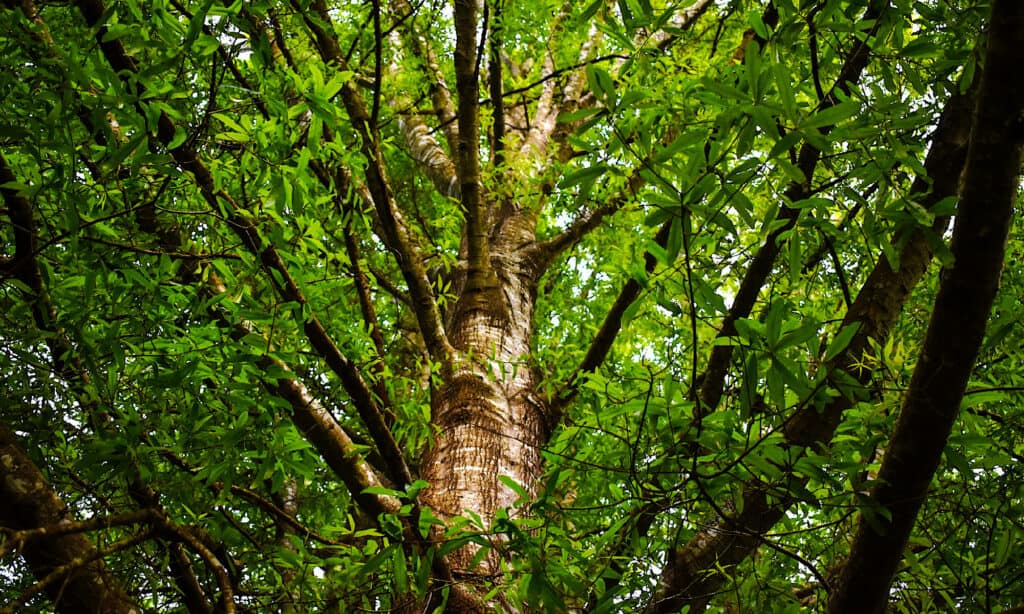
Kentucky is home to several native tree and shrub species including willow oak
©iStock.com/Caytlin Endicott
Known as “The Bluegrass State” for how common bluegrass is found, the state has a diverse ecosystem that supports the growth of plants. Native plants in Kentucky are in abundance, ranging from bottle gentian to purple coneflowers.
Trees native to Kentucky include black cherry, black walnut, blue ash, bur oak, green ash, Kentucky coffeetree, pin oak, red maple, sassafras, sycamore, and willow oak. Shrubs include bluestar, fragrant sumac, spice bush, wild hydrangea, winterberry.
The Flag of Kentucky

The flag of Kentucky was designed by Jesse Cox Burgess an art teacher
©Free Grunge Textures – www.freestock.ca – License
Kentucky’s state flag has rich blue background against which its seal stands. The seal itself depicts two men, one a frontiersman (on the left) and the other a statesman (on the right), greeting each other warmly. The words “United We Stand”, are placed above the men, while the words, “Divided We Fall”, are placed below them.
The lower half of the seal itself is framed with the golden rod which itself is the official state flower of Kentucky, while the upper half is framed with the words “Commonwealth of Kentucky”, in yellow uppercase lettering. The flag was designed by art teacher Jessie Cox Burgess and subsequently adopted by the State General Assembly in 1918.
Learn more about the flag of Kentucky here.
Kentuckian Animals

Admiral Butterfly
Stunningly beautiful wings
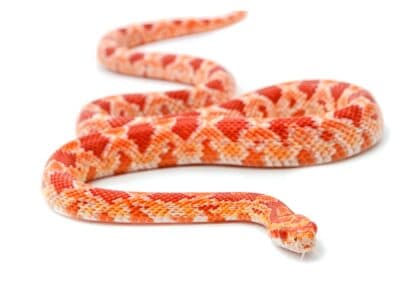
Albino (Amelanistic) Corn Snake
Albino corn snakes make great beginner snakes.
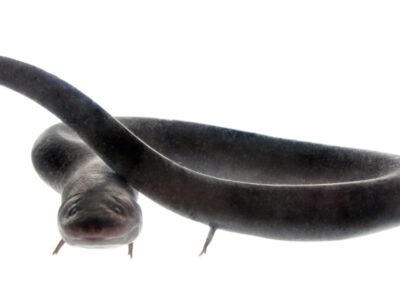
American Eel
Don't eat raw eel! Their blood is poisonous to humans when consumed raw.

Armyworm
They are so named because they "march" in armies of worms from one crop to another in search of food
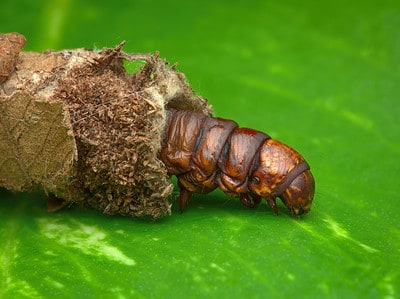
Bagworm Moth Caterpillar
They continually enlarge their protective cases

Beewolf wasp
They hunt bees
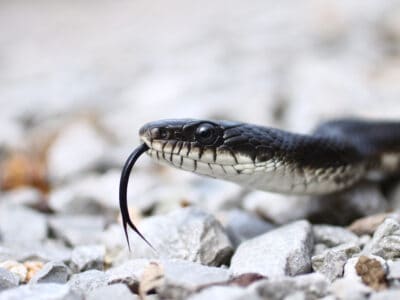
Black Rat Snake
They're also called black pilot snakes due to a myth that they "pilot" venomous snakes to a den where they can go into brumation for the winter.

Common Yellowthroat
The Common Yellowthroat stays close to the ground and uses stealth to survive!
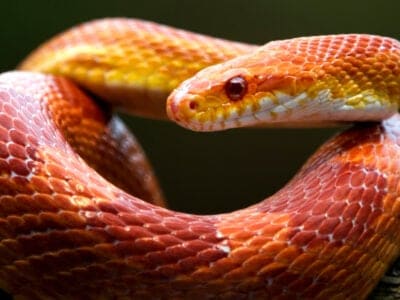
Corn Snake
Corn snakes are partly arboreal and are excellent climbers.
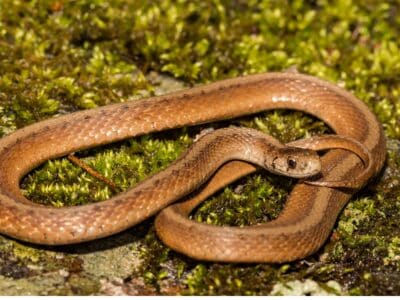
De Kay’s Brown Snake
They have specialized jaws for removing snails from shells.
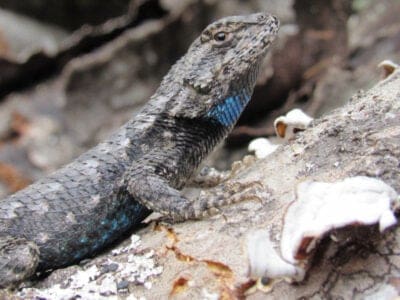
Eastern Fence Lizard
Females are usually larger than males.
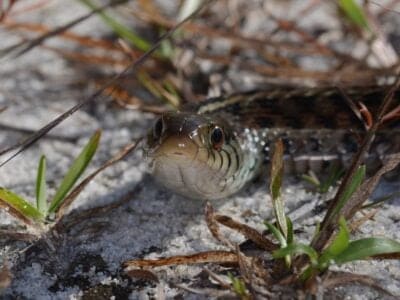
Eastern Glass Lizard
When the glass lizard loses its tail it can grow another one. But the new tail lacks the markings of the old one and is usually shorter.

Eastern Hognose Snake
Eastern hognose snakes are venomous, but only to frogs and toads.

Flea
Adult fleas can jump up to 7 inches in the air
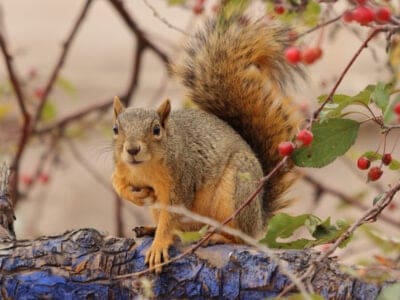
Fox Squirrel
Although it is a tree squirrel, it spends most of its time on the ground.
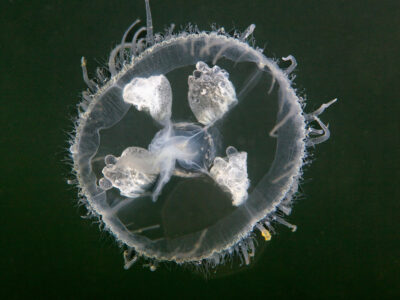
Freshwater Jellyfish
The freshwater jellyfish is native to China but is now found all over the world

Groundhog (Woodchuck)
They whistle to each other to warn of approaching danger!

Jackrabbit
They can run as fast as 45 mph.

Kentucky Warbler
The Kentucky Warbler appears to wear bright yellow cat-eye glasses!
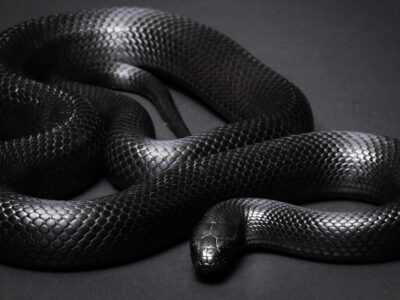
King Snake
King Snakes eat other types of snakes.

Mealybug
They have a symbiotic relationship with ants.

Mockingbird
Mockingbirds are incredible mimics that can learn hundreds of songs!
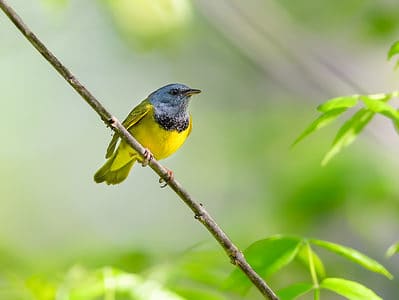
Mourning Warbler
The Mourning Warbler was named for its gray head, which resembles a mourning veil!
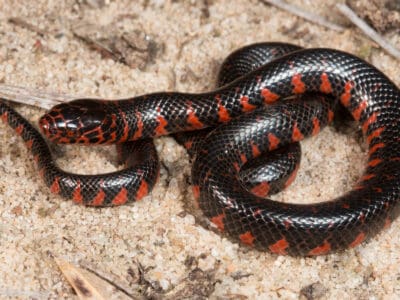
Mud Snake
Mud snakes can lay over 100 eggs at a single time!

Nematode
Nematodes range in size from 1/10 of an inch to 28 feet long

Orb Weaver
Females are about four times the size of males

Owl
The owl can rotate its head some 270 degrees
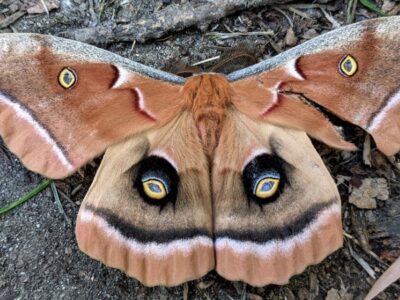
Polyphemus Moth
The Polyphemus moth doesn’t and can't eat, except when it's a caterpillar!

Rat Snakes
Rat snakes are constrictors from the Colubridae family of snakes.
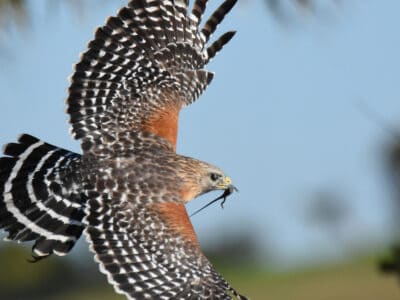
Red-Shouldered Hawk
Red-Shouldered Hawks reuse the same nesting area each year.

Rooster
Will mate with the entire flock!
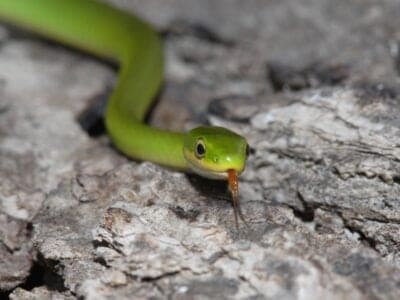
Rough Green Snake
Rough green snakes are great pet snakes because they're low-maintenance.
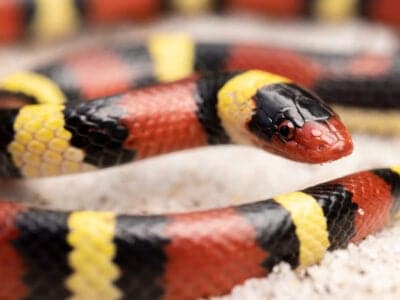
Scarlet Kingsnake
Scarlet kingsnake’s pattern is an example of Batesian mimicry.

Smallmouth Bass
A fierce fighter!

Smokybrown Cockroach
Has up to 45 eggs per egg case
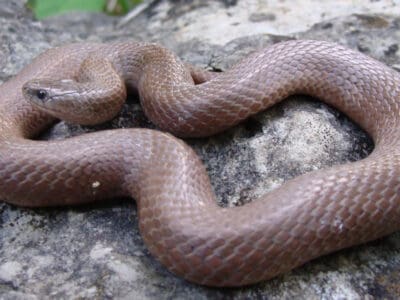
Smooth Earth Snake
Valeria Biddle Blaney (1828-1900) collected the first specimen in Maryland.
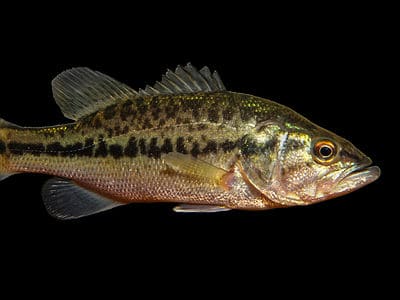
Spotted Bass
Spotted bass tend to congregate in schools unlike other types of bass fish.

Tree Cricket
They make music with their wings
Kentuckian Animals List
- Admiral Butterfly
- Agkistrodon Contortrix
- Albino (Amelanistic) Corn Snake
- American Eel
- Armyworm
- Bagworm Moth Caterpillar
- Beewolf wasp
- Black Rat Snake
- Common Yellowthroat
- Corn Snake
- De Kay’s Brown Snake
- Dire Wolf
- Eastern Fence Lizard
- Eastern Glass Lizard
- Eastern Hognose Snake
- Flea
- Fox Squirrel
- Freshwater Jellyfish
- Groundhog (Woodchuck)
- Jackrabbit
- Kentucky Warbler
- King Snake
- Mealybug
- Milk Snake
- Mockingbird
- Mourning Warbler
- Mud Snake
- Nematode
- Orb Weaver
- Owl
- Pine Snake
- Polyphemus Moth
- Rat Snakes
- Red-Shouldered Hawk
- Rooster
- Rough Green Snake
- Sandhill Crane
- Scarlet Kingsnake
- Smallmouth Bass
- Smokybrown Cockroach
- Smooth Earth Snake
- Spotted Bass
- Swallowtail Butterfly
- Tree Cricket
Animals in Kentucky FAQs (Frequently Asked Questions)
What kind of animals live in Kentucky?
Lots of different kinds of animals live in Kentucky! Some of the native wildlife includes raccoons, black bears, white-tailed deer, Kentucky warblers, eastern chipmunks, copperhead snakes, American toads, little brown bats, and Kentucky spotted bass just to name a few.
What dangerous animals live in Kentucky?
The most dangerous wildlife living in Kentucky include the black widow spider, the copperhead snake, the cottonmouth snake, and the black bear. Whether an animal is considered dangerous or not, it’s always a smart idea to be respectful of wildlife and their natural environment.
What predators are in Kentucky?
Many animals native to Kentucky are considered predators. Some of those include coyotes, gray foxes, bald eagles, black bears, and bobcats. These predators are experts at finding birds, fish, and rodents to eat.
What is the deadliest animal in Kentucky?
The deadliest animal in Kentucky is the white-tailed deer. This fact may seem strange knowing that deer are gentle and non-aggressive wild animals. But white-tailed deer are responsible for 1.5 million car accidents per year in Kentucky.
When a deer comes out of the trees or brush to cross a busy road, it can be very difficult for drivers to avoid them. This is how accidents happen. Vehicle crashes related to a deer crossing the road cause approximately 150 human deaths each year along with many thousands of injuries.
As a note, deer are especially active during their breeding season lasting from October through December. In Kentucky, November is the month when most of the vehicle collisions with deer occur.
What ticks are in Kentucky?
There are several types of ticks in Kentucky including Gulf Coast ticks, American dog ticks, Asian longhorned ticks, and lone star ticks. A tick of particular concern is the black-legged tick, which carries a number of conditions including Lyme disease.



